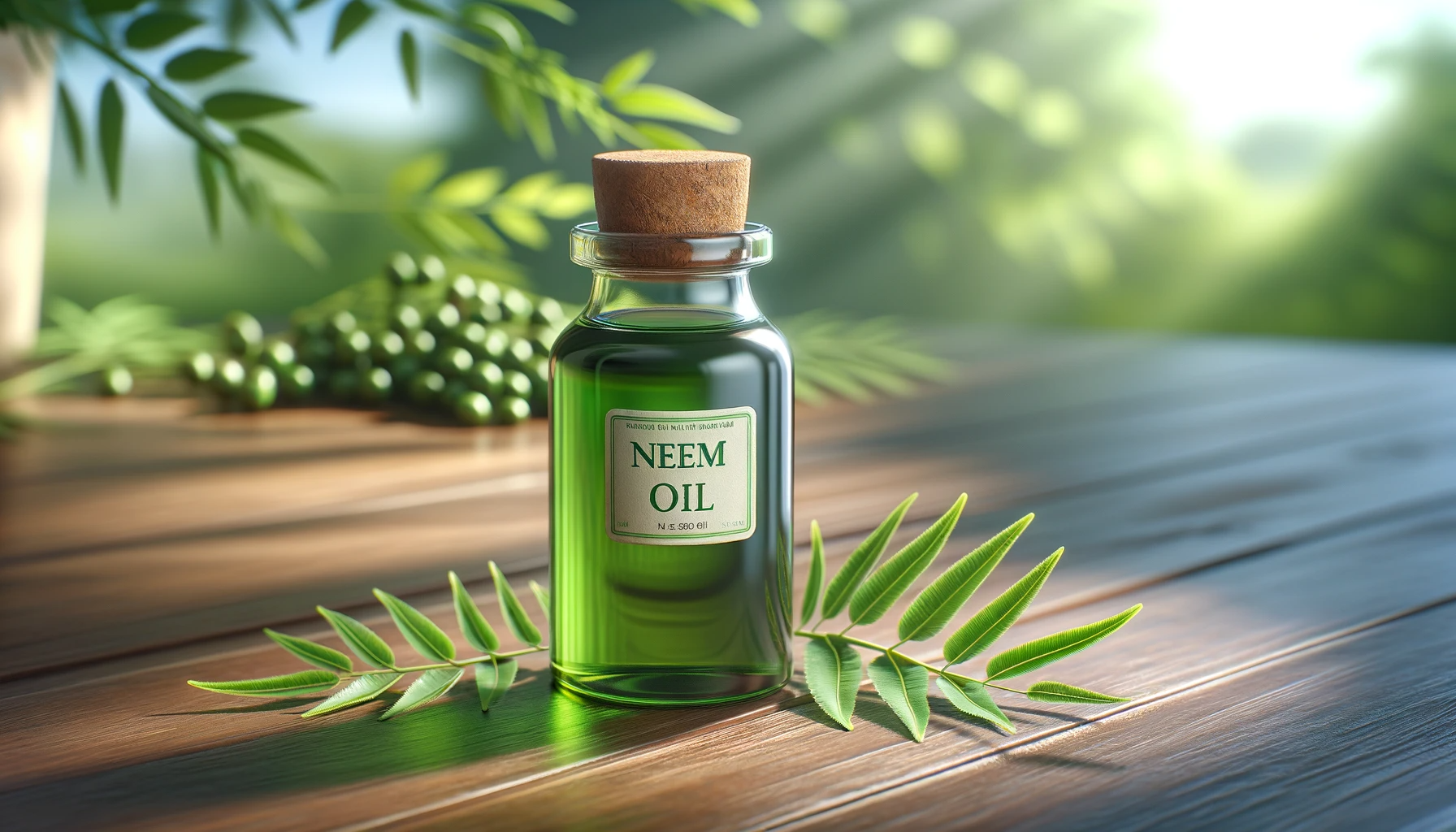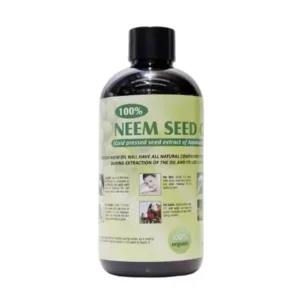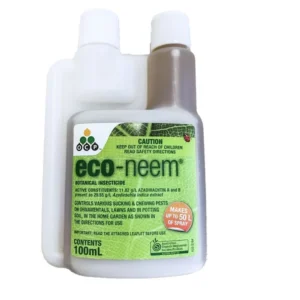Neem Oil as an Insecticide: Your Garden’s Guardian for Healthy Plants and a Thriving Ecosystem

Ever felt at a loss about how to deal with those annoying bugs munching away at your garden? Well, let’s talk about Neem Oil, the superhero from nature’s corner! It’s squeezed out from the seeds of the mighty Neem tree, and let me tell you, it packs a punch without the knockout blow to our green planet.
So, are you eager to find out how this green warrior keeps the critters at bay and how you can wield its power in your own backyard? That’s exactly the journey we’re about to take in this article. Pull on those gloves and let’s dive into the world of Neem Oil. Together, we’ll turn your garden into a haven of health and sustainability, one drop at a time!
How Neem Oil Works as an Insecticide
Neem Oil is like your garden’s secret superhero, straight from the seeds of the neem tree (Azadirachta indica). Not only does it get rid of those pesky bugs effectively, but it’s also like a gentle giant for your garden and Mother Nature.
Now, here’s the cool part – Neem oil is like a Swiss Army knife in your gardening toolkit. It takes care of a bunch of annoying pests like aphids, beetle larvae, caterpillars, mites, and whiteflies. But wait, there’s more! It’s not just about pests; additionally, it’s also a superhero against fungal diseases like powdery mildew. How does it do it, you ask? Well, it chokes the life out of insects and messes with their life-cycle.
But here’s the cherry on top – Neem Oil is the eco-friendly hero your garden deserves. When you use it right, it won’t hurt the good guys like beneficial insects, your plants, or even the furry or feathered critters around. It’s pest control with a conscience.
But hold your horses, there’s a catch. To make Neem Oil work its magic, you’ve got to play detective first. You need to know which pests you’re dealing with. And always, always follow the instructions on the label for how to use it. That way, you’ll be the garden hero and keep your garden and the environment happy and healthy. It’s a win-win for everyone, including your green buddies out there!
How to use Neem Oil as an Insecticide effectively
Using Neem Oil in the Garden is a breeze, but let’s break it down into simple steps:
Preparation: First things first, you need to create a solution because pure neem oil is super concentrated and doesn’t mix with water easily.
- Measure out 1-2 teaspoons of neem oil for every gallon of water you’ll be using.
- Now, here’s a neat trick: add a few drops of a gentle liquid soap into the mix. It works like a magical potion, helping the oil blend smoothly with the water. That’s all you need for the preparation part!

Application: Now, let’s get down to applying your neem oil solution.
- Grab your trusty spray bottle with the neem oil mixture and start spraying it directly onto the leaves of your plants. Don’t forget to target the undersides of the leaves, which is where those sneaky insects like to hide.
- Here’s a pro tip: It’s best to do this during the cooler parts of the day, like early morning or late afternoon. This helps prevent any unwanted “burning” of your plants by the sun.
- Keep an eye on your garden. If you still spot those pesky pests after a week or two, don’t worry. Just repeat the application every 7 to 14 days as needed until the problem is history.
Precautions:
- Before going all out, do a little test run. Spray a tiny area of your plant with the neem oil mixture to make sure it’s all good and doesn’t react negatively. Better safe than sorry!
- Keep your neem oil adventure away from water sources where fish or little invertebrates hang out. Neem oil isn’t their favorite pool party, so let’s not invite them.
- Now, here’s the catch – while neem oil is like a friendly neighbor to many beneficial insects, some don’t like being directly sprayed. So, be mindful of that. We want your garden to be a welcoming place for everyone.
Tips and Tricks
Here are some handy tips and tricks to make your neem oil journey even smoother:
Timing Is Key: Apply neem oil during the cooler parts of the day, like early morning or late evening. Avoid direct sunlight because it can give your leaves a sunburn! And when the mercury’s soaring, it’s best to give your plants a break. High temperatures can stress them out.
Keep an Eye Out: After using neem oil, play detective. You should see fewer pests bugging your plants. But don’t stop there; keep an eye on your green buddies for any signs of stress or damage.
Storage Wisdom: If you’ve got some neem oil mix left over, treat it right. Keep it away from direct sunlight and extreme temperatures. It’s like a fine wine; it’s best when used within a few hours of mixing. Its superpowers can fade over time.
Remember, even though neem oil is as natural as it gets, it’s essential to use it responsibly and follow the instructions for the best results and safety. Happy gardening!
Conclusion
To wrap it all up, here’s the bottom line: Neem oil is your trusty sidekick in the garden, but like any hero, it comes with great responsibility. Using it responsibly and carefully is the key to protecting the delicate balance of your garden’s ecosystem.
By sticking to these simple guidelines, you’re not just getting rid of pests; you’re doing it in a way that keeps your garden healthy, your plants thriving, and the environment smiling. So, go ahead, embrace the natural insecticide powers of neem oil, and let your garden bloom in all its glory! Happy gardening, eco-warrior!

Cold Pressed Neem Seed Oil
4 reviews $19.99




 Mosquito Traps
Mosquito Traps